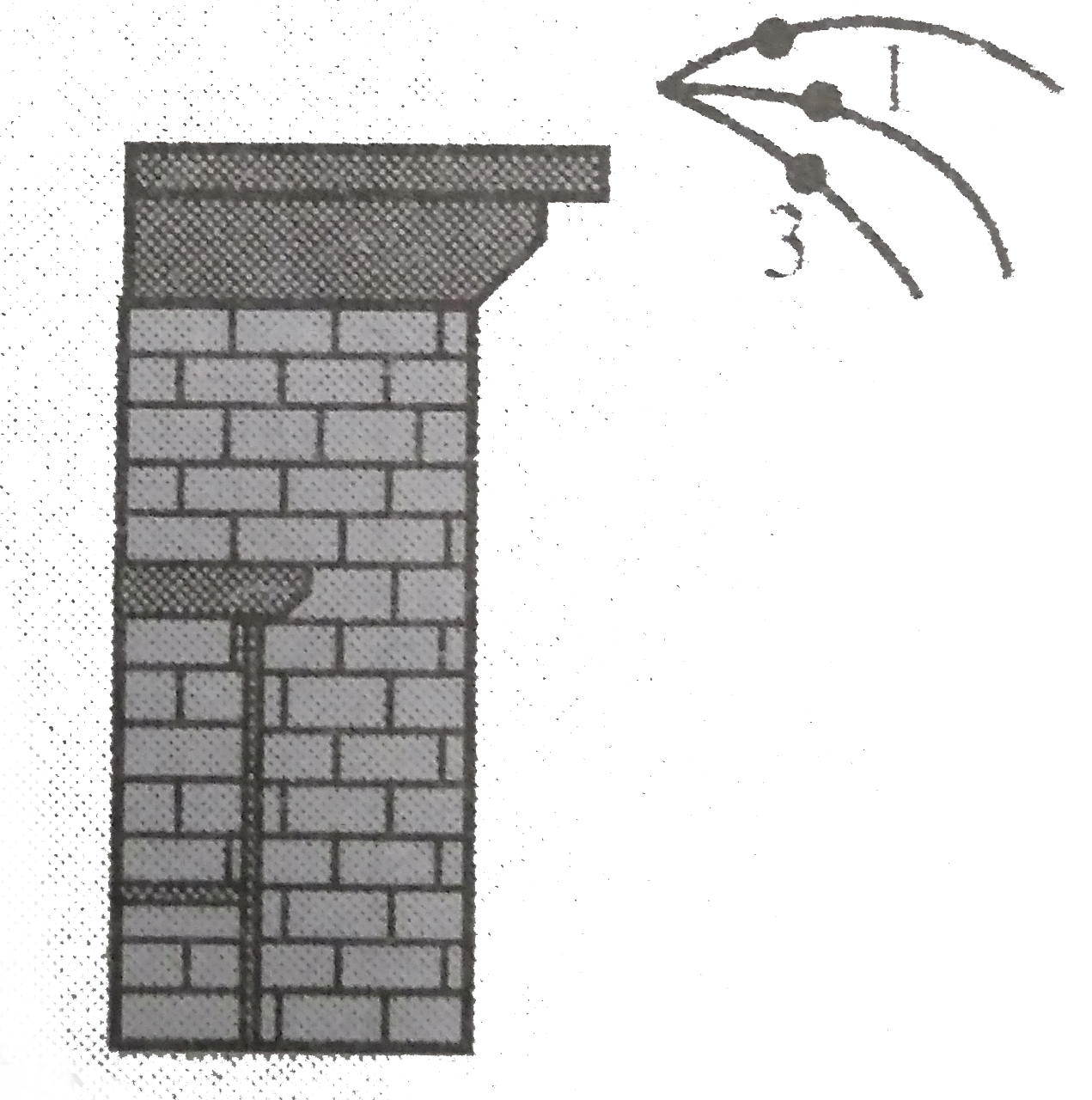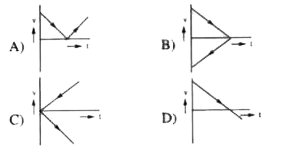Assertion:− A ball is thrown from the edge of a very high clif. No matter what the angle at which it is thrown , due to air resistance, the ball will eventually end up moving vertically downward.
Reason :− In horizontal direction there is a component of retarding force of air resistance alone.
If both Assertion & Reason are True & the Reason is a correct explanation of the Assertion.
If both Assertion & Reason are True but Reason is not a correct explanation of the Assertiion.
If Assertion is True but the Reason is False.
If both Assertion & Reason are False
The correct Answer is:A
Step-by-Step Solution:
1. Understanding the Scenario: A ball is thrown from a high cliff at an angle. The ball will have two components of velocity: horizontal (u_x) and vertical (u_y).
Hint: Visualize the ball's trajectory and the components of its initial velocity.
2. Forces Acting on the Ball: The forces acting on the ball include its weight (mg) acting downward and the air resistance (drag force) acting opposite to the direction of motion.
Hint: Remember that the drag force always acts opposite to the velocity vector.
3. Effect of Air Resistance: As the ball moves, the air resistance will exert a retarding force on both the horizontal and vertical components of the velocity. The horizontal component (u_x) will be affected by the drag force in the horizontal direction.
Hint: Consider how drag force affects motion in both the x and y directions.
4. Acceleration in the Horizontal Direction: Since there is no additional force acting in the horizontal direction (other than air resistance), the horizontal acceleration is zero. This means that the horizontal component of the velocity (u_x) will decrease due to air resistance until it becomes zero.
Hint: Think about what happens to an object moving in a straight line when a force opposes its motion.
5. Acceleration in the Vertical Direction: In the vertical direction, the ball experiences gravitational acceleration (g) downward. This means that while the horizontal component of the velocity reduces to zero, the vertical component (u_y) will continue to increase due to the acceleration from gravity.
Hint: Recall that gravity continuously accelerates objects downward, regardless of their horizontal motion.
6. Final Motion of the Ball: Eventually, the horizontal component of the velocity will become zero, and the ball will only have a downward velocity due to gravity. Thus, the ball will move vertically downward.
Hint: Consider the final state of the ball when all forces have acted upon it.
7. Conclusion: The assertion is true: no matter the angle at which the ball is thrown, it will eventually move vertically downward due to air resistance. The reason provided is also true, as the air resistance acts in the horizontal direction, reducing the horizontal component of velocity to zero.
Hint: Summarize the relationship between the assertion and the reason to confirm their validity.
Topper's Solved these Questions
- BOOK - ALLENCHAPTER - TEST PAPEREXERCISE - Exercise (Physics)330videos
TEST PAPER
- BOOK - ALLENCHAPTER - TEST PAPEREXERCISE - PHYSICS4videos
TEST PAPER
- BOOK - ALLENCHAPTER - SIMPLE HARMONIC MOTIONEXERCISE - Example1videos
SIMPLE HARMONIC MOTION
- BOOK - ALLENCHAPTER - TEST PAPER 1EXERCISE - PHYSICS11videos
TEST PAPER 1
Similar Questions
A ball is thrown vertically upwards. Which of the following plots represent the speed graph of the ball during its flight if the air resistence is not ignored?
View SolutionA ball is thrown vertically upwards. Which of the following plots represent the speed graph of the ball during its flight if the air resistence is not ignored?
View SolutionA ball is thrown vertically upwards from the ground. If T1 and T2 are the respective time taken in going up and coming down, and the air resistance is not ignored, then
View SolutionA ball is thrown vertically upwards. Which of the following plots represents the speed-time graph of the ball during its height if the air resistance is ignored ?
View SolutionA : In the presence of air resistance, if the ball is thrown vertically upwards then time of ascent is less than the time of descent.
R : Force due to air friction always acts opposite to the motion of the body.View SolutionAssertion: When a body dropped from a height explodes in mid air, its center of mass keeps moving in vertically downward directions.
Reason: Explosion occurs under internal forces only. External force is zero.View SolutionThree identical balls are thrown from the top of a building, all with the same initial speed. As shown in figure., the first ball is thrown horizontally, second above horizontal level, and third at an angle below the horizontal. Neglecting air resistance, rank the speeds of the balls at the instant each hits the ground.
 View Solution
View SolutionA small ball is thrown from the edge of one bank of a river of width 100m to just reach the bank. The ball was thrown in the vertical plane (which is also perpendicular to the banks) at an angle 37∘ to the horizonatal. Taking the starting the point as the origin O, verection as positeve y-axis and horizonrtal line passing through the point O and perpenducular to the bank as x-axis find:
(a) Equation of trahectory of the image formed by the water surface
(water surface is at the level y=0)
(b) instantaneous velocity of the image formed due to refraction. [Use g=10m/s2,R.I. of water =4/3]View SolutionA particle (A) is dropped from a height and another particle (B) is thrown in horizontal direction with speed of 5 m/s from the same height. The correct statement is
View SolutionA ball is thrown vertically upwards. Which of the following graph/graphs represent velocity-time graph of the ball during its flight (air resistance is neglected)
 View Solution
View Solution

